New York had a huge gap in fossil records during most of the Mesozoic and early Cenozoic eras. We can’t blame the state for the relative lack of sediment since most parts were covered in seawater during the early Paleozoic period. Still, this isn’t to say that the “Big Apple” state was entirely devoid of prehistoric life.
Numerous invertebrates inhabited the sea, such as trilobites, jellyfish, eurypterids, conodonts, and brachiopods. Besides, evidence indicates that some megafauna left behind footprints during the Ice Age, which later fossilized. Let’s find out how these plus-sized mammals were.
8 Extinct Animals That Lived in New York
Geologically, New York, like many other states in the eastern United States, was relatively tepid. During the late Pleistocene epoch, the state was traversed by numerous megafauna, ranging from the exotic genera of the Castoroides and giant-short-faced bears to mastodons and mammoths. Too bad these megafaunas went extinct towards the end of the last Ice Age because of climate change and human predation.
Here are 8 extinct animals that once called New York home:
1. Castoroides
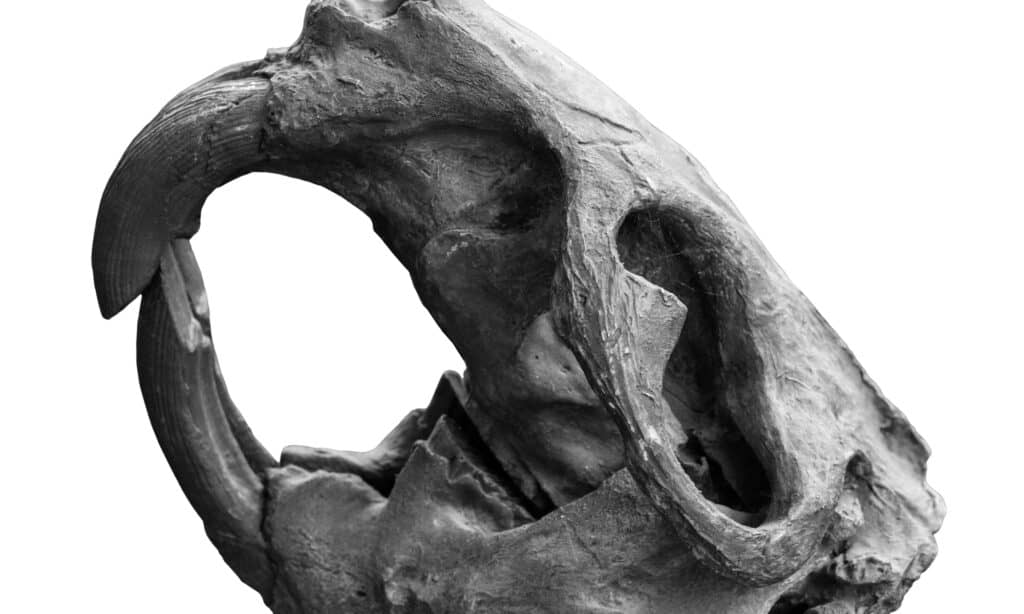
Castoroides is an extinct genus of massive, bear-sized beavers that inhabited North America during the Pleistocene.
©Art_rich/Shutterstock.com
| Castoroides | |
|---|---|
| Kingdom | Animalia |
| Phylum | Chordata |
| Class | Mammalia |
| Order | Rodentia |
| Family | Castoridae |
| Subfamily | Castoroidinae |
| Tribe | Castoroidini |
| Genus | Castoroides |
| Living period | 12,800 – 11,500 years ago |
Also called the giant beaver, Castoroides is an extinct genus of massive, bear-sized beavers that inhabited North America during the Pleistocene. They were much larger than modern beavers. Their average length is estimated at 6.2 feet, with a weight variation of between 198 and 276 pounds. This makes the species one of North America’s largest known beavers and the biggest rodents.
Castoroides’ remains were discovered in a peat bog in Ohio in 1837. Numerous fossils were later found in many US states. Radiocarbon dates from New York and Ohio indicate that the Great Lakes Basin was home to the last known population of Castoroides. The Great Lakes Basin spans the surrounding lands of Wisconsin, Pennsylvania, Ohio, New York, Minnesota, Michigan, Indiana, and Illinois.
2. American Mastodon
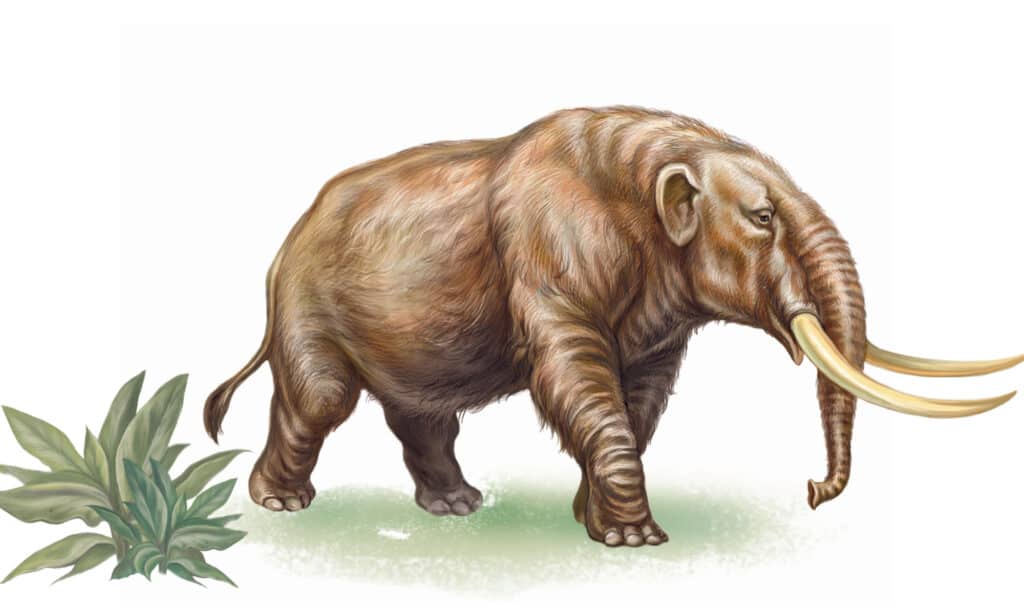
Mastodons weighed between 15,600 and 17,200 pounds.
©Liliya Butenko/Shutterstock.com
| American Mastodon | |
|---|---|
| Kingdom | Animalia |
| Phylum | Chordata |
| Class | Mammalia |
| Order | Proboscidea |
| Family | Mammutidae |
| Genus | Mammut |
| Living period | 10,000 to 11,000 years ago |
The American mastodon resembled the modern-day hairy elephant, though they were distantly related. Mastodons were predominantly forest-dwelling animals belonging to the extinct genus Mammut. They lived in herds and survived on a diet obtained by browsing and grazing, somewhat similar to woolly mammoths but probably with greater emphasis on browsing.
Mastodons were approximately 9.5 feet tall and weighed between 15,600 and 17,200 pounds. They were smaller than the mammoths and had straighter shorter tusks. Fossil evidence indicates that mastodons went extinct at the end of the Pleistocene, about 10,000 to 11,000 years ago.
Mastodon remains have been found throughout North America but were particularly abundant around the Great Lakes, including New York. There is no doubt that these giant prehistoric animals roamed the spruce forests of New York in thunderous herds. Besides, workers discovered the remains of a five-ton American Mastodon during the construction of a mill in upstate New York in 1866.
3. Woolly Mammoth

Male woolly mammoths measured 11 feet tall at the shoulder and weighed approximately 12,000 pounds.
©Dotted Yeti/Shutterstock.com
| Woolly Mammoth | |
|---|---|
| Kingdom | Animalia |
| Phylum | Chordata |
| Class | Mammalia |
| Order | Proboscidea |
| Family | Elephantidae |
| Genus | Mammuthus |
| Species | Mammuthus primigenius |
The woolly mammoth is a mammoth species that went extinct 37,000 years ago. It was closely related to modern-day elephants, even though they looked similar to American Mastodons. Male woolly mammoths measured 11 feet high at the shoulder and weighed approximately 12,000 pounds. Females were much smaller, with a total height of about 8.5 to 9.5 feet, and weighed 8,000 pounds.
Woolly mammoths were present in New York during the late Pleistocene. This is evident from the numerous remains that have been found within the state. In 1999-2000, the PRI staff and volunteers excavated a woolly mammoth specimen found in the backyard of a suburban home in Dutchess County, New York.
4. Giant Short-Faced Bear
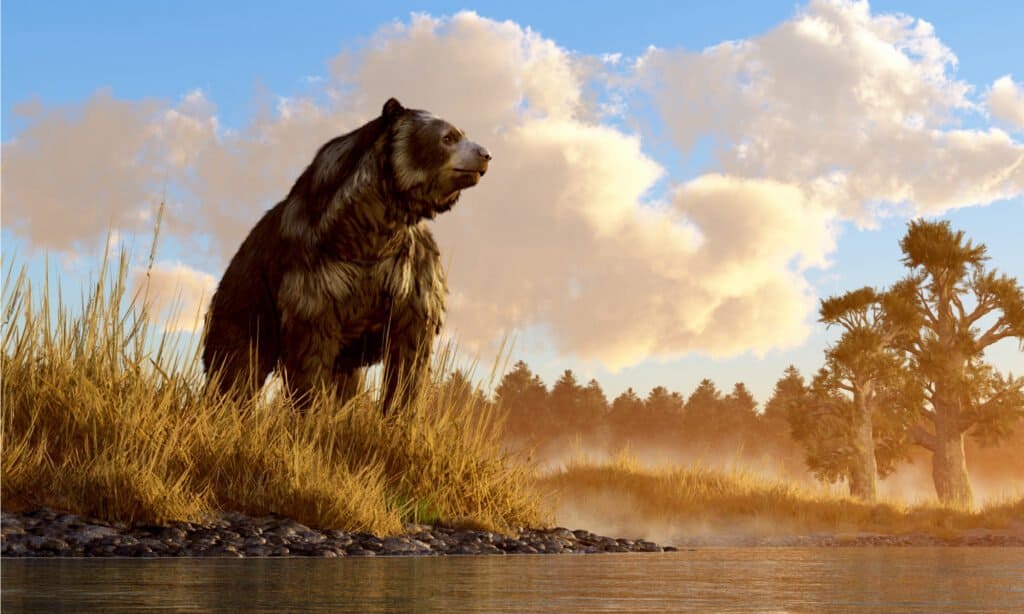
The first giant short-faced bear was an enormous species that measured between 6 to 11 feet.
©Daniel Eskridge/Shutterstock.com
| Giant Short-Faced Bear | |
|---|---|
| Kingdom | Animalia |
| Phylum | Chordata |
| Class | Mammalia |
| Order | Carnivora |
| Family | Ursidae |
| Subfamily | Tremarctinae |
| Genus | Arctodus |
| Living period | Latest Pliocene to the Holocene epoch- about 2.5 million to 12,000 years ago |
The short-faced bear was one of the largest bears that lived in North America from the latest Pliocene to the Holocene epoch, about 2.5 million years to 12,000 years ago. It was an enormous species that measured between 6 to 11 feet and could weigh approximately 2,000 pounds. Unlike modern-day bears, these short-faced bears had large molars, powerful jaws, and sharp front teeth.
The first giant short-faced bear fossils were discovered in Shasta County, California, in 1878. Numerous other remains have been recovered in more than 100 localities, including New York.
5. Grallator

Grallator is an extinct bipedal theropod dinosaur dating back to the Early Triassic and Cretaceous periods.
©Benjamin Clapp/Shutterstock.com
| Grallator | |
|---|---|
| Kingdom | Animalia |
| Phylum | Chordata |
| Clade | Dinosauria |
| Clade | Saurischia |
| Clade | Theropoda |
| Ichnofamily | Grallatoridae |
| Ichnogenus | Grallator |
| Living period | The Early Triassic and Cretaceous period – approximately 250 million to 100 million years ago |
Grallator is an extinct bipedal theropod dinosaur dating back to the Early Triassic and Cretaceous periods. Various Grallator footprints have been discovered in Rockland County, New York, dating to the Late Triassic, approximately 200 million years ago. There was pending conclusive evidence regarding the footprints until Edward Hitchcock, their discoverer, decided to attribute them to an “ichnogenus” called Grallator in 1858.
The name Grallator means “stilt walking,” though the actual length and form of the track-making legs remain unidentified. It is thought that there was significant physical variation among species.
6. Eurypterus
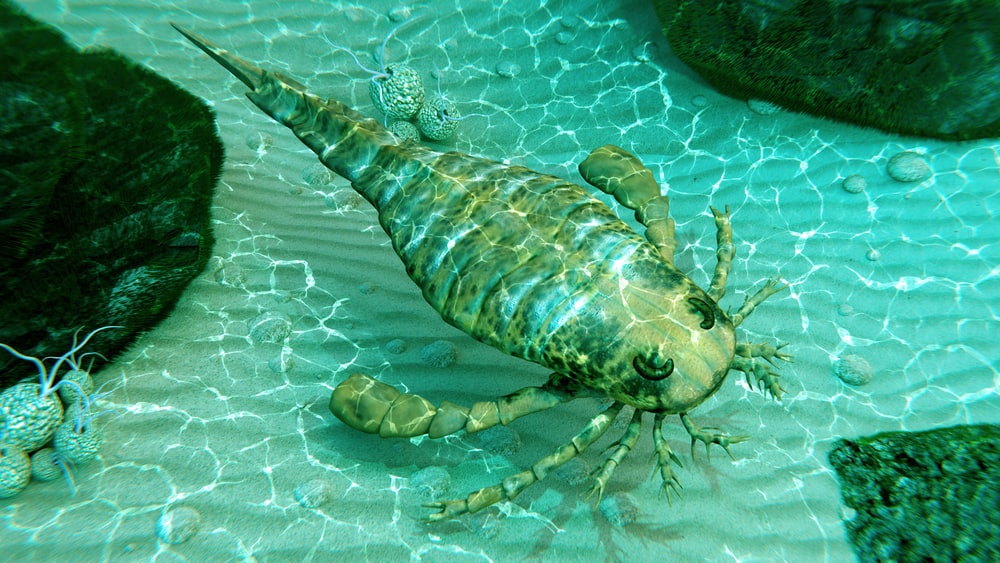
The first Eurypterus fossil was found in 1818 in the Bertie Formation of New York, near Westmoreland, Oneida County.
©Aunt Spray/Shutterstock.com
| Eurypterus | |
|---|---|
| Kingdom | Animalia |
| Phylum | Arthropoda |
| Subphylum | Chelicerata |
| Order | Eurypterida |
| Superfamily | Eurypteroidea |
| Family | Eurypteridae |
| Genus | Eurypterus |
| Living period | The Silurian Period – 432 to 418 million years ago |
Eurypterus is the official state fossil of New York. The first Eurypterus fossil was found in 1818 in the Bertie Formation of New York, near Westmoreland, Oneida County. It’s an extinct marine invertebrate that belongs to a group of organisms known as sea scorpions. This species lived 432 to 418 million years ago during the Silurian period. It was one of the most feared undersea predators before the evolution of giant marine reptiles and prehistoric sharks.
The estimated average length of all members of Eurypterus is between 5 and 9 inches, but the largest specimen found measured about 24 inches long. Eurypterus had distinctive spine-bearing appendages and a large paddle to aid swimming.
7. California Tapir
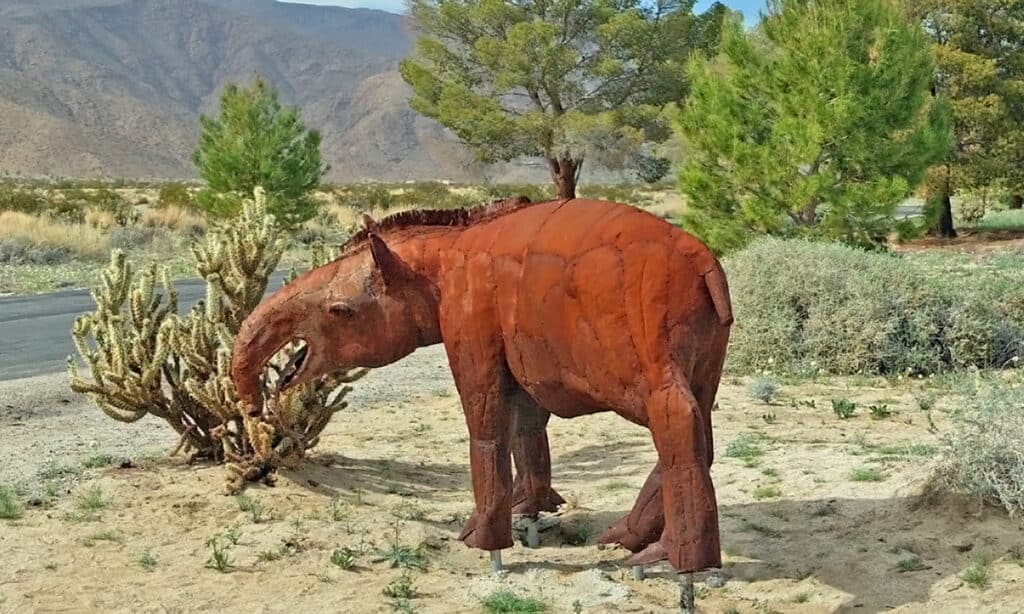
The California tapir is thought to have lived in New York along with the giant bison and caribou during the Late Cenozoic era.
©JimCottingham/Shutterstock.com
| California Tapir | |
|---|---|
| Kingdom | Animalia |
| Phylum | Chordata |
| Class | Mammalia |
| Order | Perissodactyla |
| Family | Tapiridae |
| Genus | Tapirus |
| Species | Tapirus californicus |
| Living period | about 13,000 years ago |
The California tapir (Tapirus californicus) is a species of tapir that went extinct about 13,000 years ago. It inhabited North America during the Pleistocene. Its estimated body length is about 4.6 feet, and its maximum weight is approximately 496 pounds, though there is no known complete fossil that has been collected so far. It was herbivorous, and its diet is believed to have consisted primarily of aquatic plants, leaves, and shrubs.
The California tapir is thought to have lived in New York along with the giant bison and caribou during the Late Cenozoic era. Fossils have been discovered in New York, and many other states, including the Sierra Nevada mountains in California and the La Brea Tar Pits in the modern urban center of Los Angeles.
8. Giant Bison
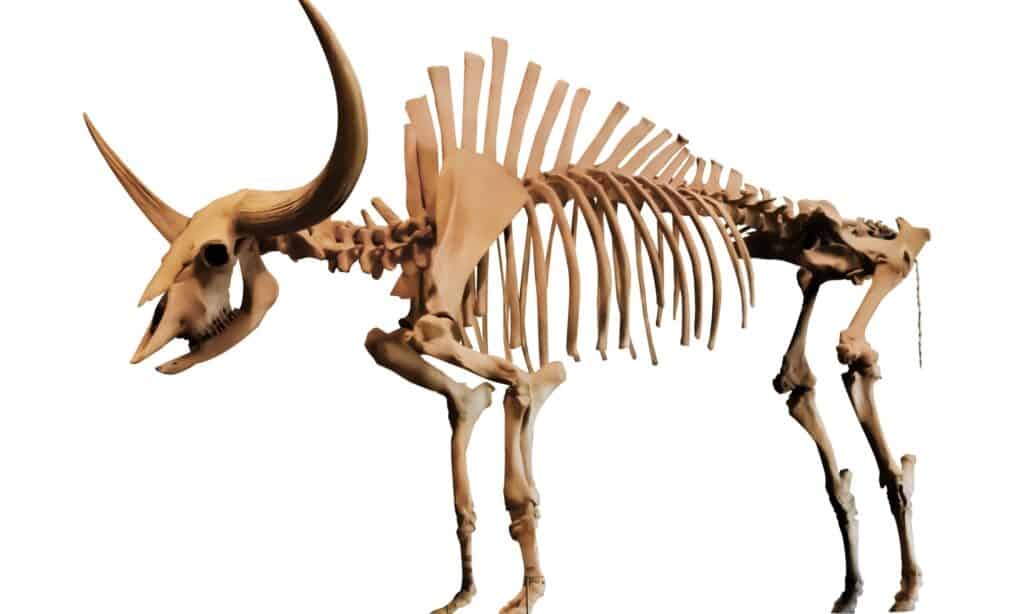
The giant bison is an extinct bison species that lived in North America about 200,000 years ago.
©iStock.com/barbaraaaa
| Giant Bison | |
|---|---|
| Kingdom | Animalia |
| Phylum | Chordata |
| Class | Mammalia |
| Order | Artiodactyla |
| Family | Bovidae |
| Subfamily | Bovinae |
| Genus | Bison |
| Species | Bison latifrons |
| Living period | 200,000 to 20,000 years ago |
Also known as the long-horned bison, the giant bison (Bison latifrons) is an extinct bison species that lived in North America about 200,000 years ago. It was the heaviest bovid with an estimated weight of 2,760 to 4,400 pounds and measured approximately 15.6 feet in total length. This species went extinct about 20,000 to 30,000 years ago.
Paleontologists believe that giant bison lived in small family groups, browsing in the woodlands and grazing in the Great Plains of North America. The giant bison also lived in New York during the Late Cenozoic era.
The photo featured at the top of this post is © Aunt Spray/Shutterstock.com
Thank you for reading! Have some feedback for us? Contact the AZ Animals editorial team.






